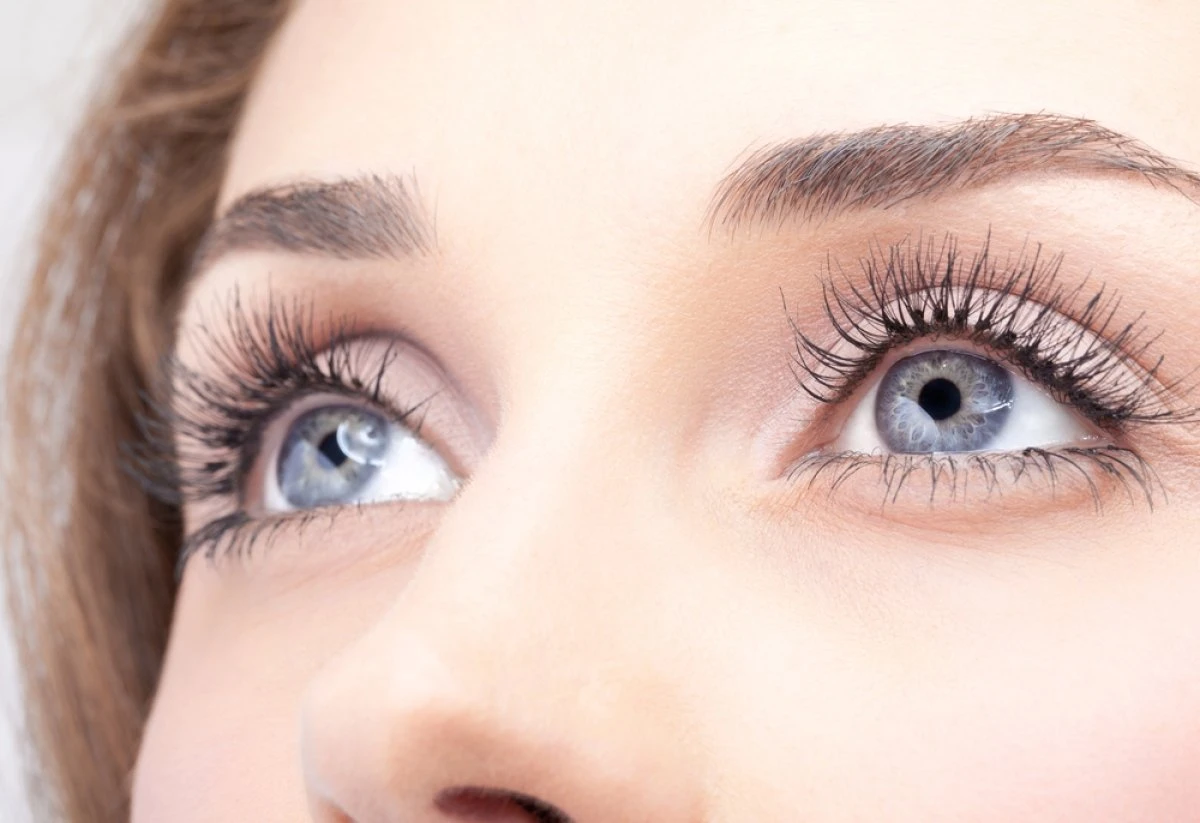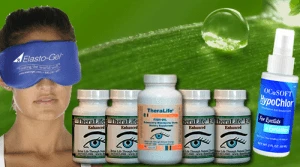To soothe mild eyelid inflammation at home, consider products from TheraLife, which are designed to support eye health and alleviate conditions like blepharitis and dry eyes. TheraLife offers a comprehensive range of remedies that focus on restoring the natural function of your eyes by enhancing cell vitality and reducing inflammation. Their products are particularly beneficial for individuals struggling with persistent eyelid issues, providing a holistic approach to eye care.
For instance, TheraLife’s Eye Enhanced formula is tailored to alleviate symptoms of dry eyes and related conditions by promoting healthy tear production and reducing eyelid inflammation. This is especially helpful for those dealing with recurrent chalazion or blepharitis, as the formula supports overall eye health and function.
Similarly, TheraLife’s dietary supplements, rooted in an anti-inflammatory approach, are crafted to address underlying causes of eye discomfort effectively. Before starting any new treatment, it’s recommended to consult a healthcare provider to ensure compatibility with your health profile. Discover more about TheraLife’s eye care solutions and how they can help you manage eyelid inflammation safely and effectively.
Best Eyelid InflammationTreatment From TheraLife- When Drops Don’t Work.
Key Takeaways
- Apply a warm compress to loosen debris and encourage oil gland secretion, but consult your doctor before starting heat treatments.
- Cleanse eyelids gently with diluted baby shampoo or commercial eyelid cleansers using a sterile cotton pad to maintain daily hygiene.
- Avoid unvalidated home remedies, such as turmeric or chamomile, due to potential irritation and lack of strong clinical evidence.
- Watch for worsening or persistent symptoms, and seek professional guidance if inflammation does not improve with home care.
- Prioritize evidence-based medical treatments and consult an ophthalmologist for personalized recommendations and to prevent complications.
Apply Warm Compresses
Although it’s a common home remedy, current evidence doesn’t support the routine use of warm compresses for treating eyelid inflammation. The practice of heat application is thought to improve eyelid care by loosening debris and encouraging oil gland secretion, but research findings are inconsistent regarding its overall benefit for inflammation management. Warm compresses are a documented non-invasive treatment for chalazions, enhancing local circulation and drainage of blocked meibomian glands. While some clinicians may still suggest a cautious, individualized trial of warm compresses in certain cases—particularly for conditions like meibomian gland dysfunction or styes—routine application isn’t universally advised due to insufficient supporting data. If you’re considering heat application as part of your eyelid care regimen, consult your healthcare provider first. You should weigh potential relief with the lack of definitive clinical benefit, and remain vigilant for any adverse effects, such as increased redness or swelling, during use.
Use Gentle Cleansing Techniques
Since eyelid inflammation often involves a buildup of debris and microorganisms along the lid margin, adopting gentle cleansing techniques is a key component of effective management.
You should consider using a commercially available eyelid cleanser or gentle products, such as diluted baby shampoo, specifically designed for periocular use. Apply the solution with a sterile cotton pad or swab, gently cleaning along the lash line without rubbing or irritating the delicate skin.
Warm compresses improve meibomian gland function, which can also help in reducing eyelid inflammation when used consistently. Maintain consistent eyelid hygiene by performing this cleansing routine once or twice daily, as recommended by eye care professionals. Avoid harsh soaps or products with fragrances, as these can exacerbate irritation.
If you notice worsening symptoms or persistent discomfort, consult an ophthalmologist. Prioritize a cautious, evidence-based approach to promote ideal eyelid health and reduce inflammation risks.
Incorporate Natural Anti-Inflammatory Remedies
While some individuals may seek natural anti-inflammatory remedies for managing eyelid inflammation, current clinical evidence does not support their efficacy or safety for this purpose. You may encounter suggestions online to use turmeric paste or chamomile tea compresses; however, these options lack rigorous validation and may pose risks such as irritation or allergic reactions. You should consult your healthcare provider before considering any home remedy, especially around sensitive eye tissues. Eyelash mites, primarily from the Demodex species, are naturally occurring organisms that can contribute to eyelid inflammation if present in large numbers.
| Remedy | Proposed Benefit | Clinical Evidence |
|---|---|---|
| Turmeric paste | Anti-inflammatory | Insufficient, unproven |
| Chamomile tea | Soothing/antimicrobial | Lacks robust studies |
| Aloe vera gel | Reduces irritation | No ocular data |
| Coconut oil | Moisturizes skin | Safety unconfirmed |
Prioritize established medical treatments and seek professional advice to avoid worsening symptoms or complications.
Best Eyelid InflammationTreatment From TheraLife- When Drops Don’t Work.
Frequently Asked Questions
When Should I See a Doctor for Eyelid Inflammation?
You should see a doctor for eyelid inflammation if you notice worsening pain, vision changes, persistent swelling, or discharge.
A healthcare professional will perform a symptoms evaluation to determine the underlying cause and recommend appropriate treatment options.
Don’t delay seeking medical advice if you experience fever, severe redness, or if home care doesn’t improve your condition within a few days.
Prompt clinical assessment can prevent complications and guarantee you receive evidence-based, effective care.
Can Makeup Worsen Eyelid Inflammation?
Imagine smearing a cocktail of potentially harsh makeup ingredients onto a raging, swollen eyelid—you’re practically inviting further chaos.
Yes, makeup can worsen eyelid inflammation, especially if you have sensitivities or prior allergic reactions to certain compounds like fragrances, preservatives, or pigments.
Clinical evidence links cosmetics to contact dermatitis and exacerbation of blepharitis.
It’s best to avoid eye makeup until symptoms resolve, and always choose hypoallergenic products after consulting your healthcare provider.
Is Eyelid Inflammation Contagious?
You’re likely wondering if eyelid inflammation transmission is possible. Eyelid inflammation itself isn’t always contagious—it depends on the cause.
If it’s due to a bacterial or viral infection, there’s a risk of spreading it to others. To reduce transmission, you should avoid sharing towels, eye makeup, or contact lenses.
Follow prevention strategies like frequent handwashing, avoiding eye-touching, and seeking prompt medical care if symptoms persist or worsen.
What Are Common Causes of Eyelid Inflammation?
When you experience eyelid inflammation, you should consider common causes like allergies symptoms, bacterial or viral infections, and exposure to skin irritants.
Allergic reactions often result from pollen, dust, or certain cosmetics. Skin irritants such as harsh soaps or contact lens solutions can also trigger inflammation.
You’ll want to monitor for redness, swelling, and itching. Consult an ophthalmologist for persistent or severe cases to determine the underlying etiology and receive appropriate treatment.
Are Over-The-Counter Eye Drops Safe for This Condition?
Imagine your eyes as delicate windows—wrong eye drop types can cloud the view rather than clear it. Over-the-counter eye drops may provide relief, but you should follow usage guidelines strictly.
Artificial tears are generally safe, yet avoid redness-reducing drops, as these may worsen irritation. If your symptoms persist or worsen, consult an ophthalmologist.
It’s essential to identify the underlying cause to choose the safest, most effective treatment and prevent complications.
Best Eyelid InflammationTreatment From TheraLife- When Drops Don’t Work.
Conclusion
When managing eyelid inflammation, TheraLife’s products can be a supportive choice for customers. Theralife.com emphasizes natural solutions for eye care, offering products designed to alleviate symptoms related to blepharitis, dry eyes, and other eye conditions. While enthusiasts of herbal anti-inflammatories find some relief, it’s important to note that clinical evidence remains limited. Customers are advised to use these products as a complement to professional medical advice. If symptoms persist or worsen, consulting an ophthalmologist is crucial. TheraLife provides a range of options, from dietary suggestions to specific eye care products, to enhance self-care but underscores the importance of professional guidance for persistent or severe issues.
References
- 1.
- Putnam CM. Diagnosis and management of blepharitis: an optometrist’s perspective. Clin Optom (Auckl). 2016;8:71-78. [PMC free article] [PubMed]
- 2.
- Huggins AB, Carrasco JR, Eagle RC. MEN 2B masquerading as chronic blepharitis and euryblepharon. Orbit. 2019 Dec;38(6):514-518. [PubMed]
- 3.
- Dietrich-Ntoukas T. [Chronic Blepharitis]. Klin Monbl Augenheilkd. 2022 Nov;239(11):1381-1393. [PubMed]
- 4.
- Rodriguez-Garcia A, Loya-Garcia D, Hernandez-Quintela E, Navas A. Risk factors for ocular surface damage in Mexican patients with dry eye disease: a population-based study. Clin Ophthalmol. 2019;13:53-62. [PMC free article] [PubMed]
- 5.
- Choi FD, Juhasz MLW, Atanaskova Mesinkovska N. Topical ketoconazole: a systematic review of current dermatological applications and future developments. J Dermatolog Treat. 2019 Dec;30(8):760-771. [PubMed]
- 6.
- Tavassoli S, Wong N, Chan E. Ocular manifestations of rosacea: A clinical review. Clin Exp Ophthalmol. 2021 Mar;49(2):104-117. [PubMed]
- 7.
- Lin A, Ahmad S, Amescua G, Cheung AY, Choi DS, Jhanji V, Mian SI, Rhee MK, Viriya ET, Mah FS, Varu DM., American Academy of Ophthalmology Preferred Practice Pattern Cornea/External Disease Panel. Blepharitis Preferred Practice Pattern®. Ophthalmology. 2024 Apr;131(4):P50-P86. [PubMed]
- 8.
- Ozkan J, Willcox MD. The Ocular Microbiome: Molecular Characterisation of a Unique and Low Microbial Environment. Curr Eye Res. 2019 Jul;44(7):685-694. [PubMed]
- 9.
- Khoo P, Ooi KG, Watson S. Effectiveness of pharmaceutical interventions for meibomian gland dysfunction: An evidence-based review of clinical trials. Clin Exp Ophthalmol. 2019 Jul;47(5):658-668. [PubMed]
- 10.
- Soh Qin R, Tong Hak Tien L. Healthcare delivery in meibomian gland dysfunction and blepharitis. Ocul Surf. 2019 Apr;17(2):176-178. [PubMed]





